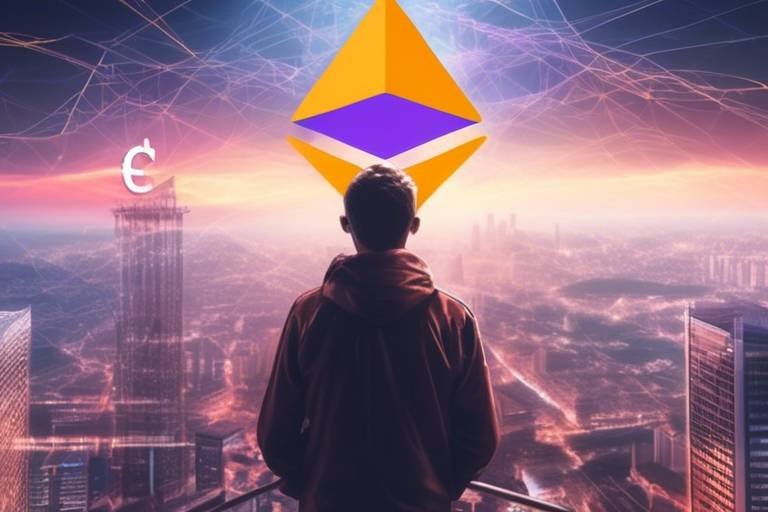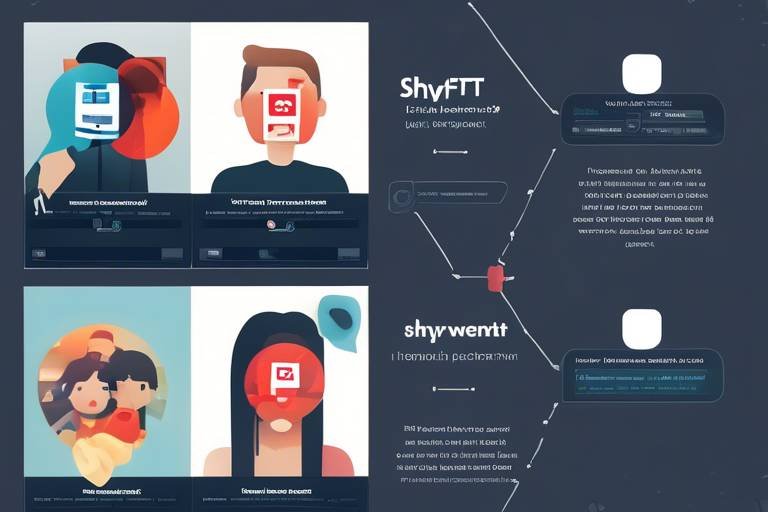Radix - A New Approach to Decentralized Finance
In the rapidly evolving landscape of finance, decentralized finance (DeFi) has emerged as a revolutionary concept, aiming to democratize access to financial services. However, traditional blockchain solutions often struggle with issues like scalability, security, and user experience. Enter Radix, a groundbreaking platform that is not just another player in the DeFi space but a game-changer that addresses these critical challenges head-on. Imagine a world where financial transactions are not only faster but also more secure and cost-effective—this is the vision that Radix is bringing to life.
At its core, Radix is designed to enhance the overall financial ecosystem by leveraging innovative technology that prioritizes user experience without compromising security. Think of Radix as a high-speed train on a previously congested track, allowing users to zip through transactions with ease while ensuring their data and assets are well-protected. This article will explore how Radix is transforming the DeFi landscape, making it more efficient and accessible for everyone, from individual users to large enterprises.
So, what really sets Radix apart? It’s not just the technology; it’s the holistic approach to creating a decentralized financial environment that prioritizes scalability, security, and user experience. With Radix, users can enjoy lower fees, faster transactions, and enhanced security features that collectively improve their overall DeFi experience. As we dive deeper into the workings of Radix, you’ll discover how its unique architecture and consensus mechanism are paving the way for a new era in decentralized finance.
In the following sections, we will delve into the specific technologies that make Radix a standout platform, examine the benefits it offers to users, and speculate on its future impact on the financial industry. Are you ready to explore the future of finance with Radix? Let’s get started!

Understanding Radix Technology
Radix is not just another player in the decentralized finance (DeFi) arena; it’s a revolutionary platform that redefines how we think about financial transactions. At its core, Radix employs a unique architecture that significantly enhances both transaction throughput and security. Imagine a highway designed not only to handle more traffic but also to ensure that every vehicle arrives safely at its destination. This is precisely what Radix achieves by leveraging its innovative technology.
One of the standout features of Radix is its use of a data structure known as the Radix Engine. This engine is specifically designed to facilitate the rapid execution of smart contracts, which are self-executing contracts with the terms of the agreement directly written into code. Unlike traditional blockchains that can become congested during peak usage times, Radix’s architecture allows for parallel processing, meaning multiple transactions can occur simultaneously. This is akin to having multiple lanes on a highway, allowing for a smoother flow of traffic. As a result, Radix can handle a vast number of transactions without the delays commonly associated with other blockchain platforms.
Another key component of Radix technology is its Atomic Composability. This feature enables developers to create complex financial applications that can interact seamlessly with one another. Think of it like building blocks—each block can connect and interact with others, creating a robust and dynamic ecosystem. This not only enhances the user experience but also opens the door for innovative financial products that were previously unimaginable.
Security is a paramount concern in any financial system, and Radix takes this seriously. The platform incorporates advanced cryptographic techniques and a unique consensus mechanism that ensures the integrity and security of transactions. By distributing the validation process across multiple nodes, Radix minimizes the risk of a single point of failure, making it a fortress in the world of DeFi. In essence, users can engage in transactions with peace of mind, knowing that their assets are protected by state-of-the-art security measures.
To summarize, Radix is setting a new standard in decentralized finance through its groundbreaking technology. Its combination of the Radix Engine, Atomic Composability, and robust security features creates an environment that not only enhances user experience but also fosters innovation. As we dive deeper into the benefits and implications of Radix, it becomes clear that this platform is not just a trend; it’s a fundamental shift in how we approach finance in the digital age.

The Benefits of Radix for Users
When it comes to decentralized finance, Radix is not just another player in the game; it's a game changer. Imagine a world where financial transactions are not only faster but also more affordable. That's precisely what Radix offers. With its innovative approach, Radix is set to revolutionize the way we think about and engage with financial services. So, what exactly are the benefits that Radix brings to the table? Let’s dive in!
First and foremost, one of the standout features of Radix is its ability to significantly lower transaction costs. In a landscape where every penny counts, especially for small businesses and individual users, Radix's fee structure is a breath of fresh air. Traditional blockchain platforms often burden users with hefty fees, especially during peak times. However, Radix has designed its system to ensure that users can conduct transactions without the fear of being gouged by fees. This means more money in your pocket and less worry about the costs associated with moving your assets.
To illustrate this point, let’s look at a simple comparison of transaction fees across various platforms:
| Platform | Average Transaction Fee |
|---|---|
| Ethereum | $5.00 |
| Bitcoin | $2.50 |
| Radix | $0.01 |
As you can see from the table, Radix's fees are not just lower; they are drastically lower, making it an attractive option for users looking to maximize their returns. But it's not just about saving money; it's also about the speed of transactions. In a world that values immediacy, Radix ensures that transactions are processed quickly, allowing users to execute trades and move funds without unnecessary delays. This efficiency can be the difference between capitalizing on a market opportunity or missing out entirely.
Moreover, the impact of lower transaction costs is particularly significant for small transactions. Many platforms impose minimum fees that can render small trades unfeasible. With Radix, even the tiniest transactions become viable, which opens up the DeFi space to a broader audience. Imagine a budding entrepreneur who wants to test a new product in the market. With Radix, they can make small, cost-effective transactions without the fear of losing money on fees. This accessibility is crucial for fostering innovation and growth within the ecosystem.
But wait, there’s more! Security is another pillar on which Radix stands tall. In the world of finance, trust is paramount, and Radix takes this seriously. The platform incorporates advanced security features to protect users' assets and data. With built-in mechanisms that safeguard against fraud and hacking attempts, users can engage in DeFi with peace of mind. In a sector where security breaches can lead to devastating losses, Radix's robust security measures make it a trustworthy choice.
In summary, Radix is not just about lower fees; it’s about creating a holistic experience that prioritizes user satisfaction. By combining affordability, speed, and security, Radix empowers users to take control of their financial futures. Whether you are a seasoned investor or just dipping your toes into the world of decentralized finance, Radix offers a platform that caters to your needs. So, are you ready to explore the possibilities that Radix has to offer?
- What makes Radix different from other DeFi platforms? Radix stands out due to its unique architecture that enhances transaction throughput and security, along with significantly lower fees.
- How does Radix ensure security for its users? Radix incorporates advanced security measures designed to protect users from fraud and hacking, ensuring a safe environment for transactions.
- Can small transactions be made on Radix? Absolutely! Radix's low fee structure makes it ideal for small transactions, allowing greater accessibility for all users.

Lower Transaction Costs
When diving into the world of decentralized finance (DeFi), one of the most pressing concerns for users is the cost of transactions. With traditional blockchain platforms, users often face exorbitant fees that can turn small trades into costly endeavors. This is where Radix steps in as a game changer. By leveraging its unique technology, Radix is able to significantly lower transaction costs, making DeFi more accessible to everyone.
Imagine you're at a bustling marketplace, and every time you want to buy a small item, you have to pay a hefty entry fee. Frustrating, right? That's the reality many face in the DeFi space today. However, with Radix, it's like having a market where you can freely enter and exit without the burden of high fees. This transformation not only benefits individual users but also enhances the overall ecosystem by encouraging more transactions and participation.
So, how does Radix achieve these lower transaction costs? The platform is designed with a focus on efficiency and scalability, incorporating a fee structure that is both transparent and user-friendly. By utilizing a unique consensus mechanism and innovative architectural solutions, Radix minimizes the computational resources required for each transaction. This reduction in resource consumption directly translates to lower fees for users.
| Platform | Average Transaction Fee |
|---|---|
| Ethereum | $20 - $50 |
| Binance Smart Chain | $0.50 - $1 |
| Radix | Less than $0.01 |
As seen in the table above, Radix's transaction fees are not only lower than those of its competitors but are also designed to remain stable, regardless of network congestion. This stability is crucial for users who wish to engage in frequent trading or small transactions without the fear of being priced out.
Furthermore, the implications of these lower transaction costs extend beyond just individual users. Businesses and developers can also benefit from reduced operational expenses, allowing them to innovate and create new applications within the Radix ecosystem. This could lead to an explosion of new DeFi products and services, ultimately enriching the financial landscape.
In summary, Radix's commitment to lowering transaction costs is a pivotal factor that sets it apart in the DeFi space. By making transactions more affordable, Radix not only enhances user experience but also paves the way for a more inclusive financial ecosystem where everyone can participate without fear of excessive fees.
- What makes Radix different from other DeFi platforms? Radix utilizes a unique architecture and consensus mechanism that significantly lowers transaction costs and enhances scalability.
- How does Radix maintain low fees? The platform minimizes computational resources required for transactions, which directly translates to lower fees for users.
- Can small transactions benefit from Radix? Absolutely! Radix's low fees make it accessible for small transactions, encouraging broader participation in the DeFi ecosystem.

Fee Structure Explained
Understanding the fee structure of Radix is essential for anyone looking to dive into the world of decentralized finance (DeFi). Unlike traditional financial systems where hidden fees and complex pricing models can lead to confusion, Radix aims for transparency and simplicity. At its core, the fee structure is designed to be user-friendly while ensuring that the network remains sustainable and efficient.
Radix employs a unique approach to transaction fees, which are significantly lower than those found on many other platforms. This is largely due to its innovative architecture that reduces the computational load required for each transaction. As a result, users can enjoy affordable transactions without sacrificing speed or security. To give you a clearer picture, let's break down the key components of Radix's fee structure:
| Fee Component | Description |
|---|---|
| Transaction Fee | A small fee paid for processing transactions on the Radix network, typically much lower than competitors. |
| Gas Fees | Fees associated with the computational effort required to execute a transaction, minimized in Radix due to efficient design. |
| Network Fees | Fees that support the overall maintenance and security of the network, ensuring its long-term viability. |
In comparison to other platforms, where transaction fees can skyrocket during peak usage times, Radix maintains a consistent and predictable fee structure. For instance, on Ethereum, users often face exorbitant gas fees that can deter small transactions. In contrast, Radix’s model allows users to engage in microtransactions without worrying about prohibitive costs.
This low-cost structure is particularly advantageous for small transactions. Imagine trying to send a small amount of cryptocurrency to a friend or make a tiny purchase; on most platforms, the fees could exceed the amount being sent! Radix eliminates this barrier, making it easier for a wider audience to participate in the DeFi ecosystem. This accessibility can lead to a surge in user engagement, fostering a more vibrant and diverse financial community.
Ultimately, the fee structure of Radix is not just about saving money; it's about creating an ecosystem where everyone can participate without fear of excessive costs. By lowering the barriers to entry, Radix is paving the way for a more inclusive financial landscape.
- What are transaction fees on Radix? Transaction fees on Radix are significantly lower than on many traditional platforms, making it affordable for users to engage in various transactions.
- How does Radix ensure low fees? Radix's innovative architecture reduces the computational load, allowing for lower fees while maintaining high performance.
- Can small transactions be made on Radix? Absolutely! Radix's low fee structure encourages small transactions, making DeFi accessible to everyone.

Impact on Small Transactions
One of the most exciting aspects of Radix is its profound . Traditionally, decentralized finance (DeFi) platforms have been plagued by high transaction fees that can eat away at the value of smaller trades. Imagine wanting to invest a modest amount in a new token, only to find that the transaction fees are higher than the investment itself! This scenario is a significant barrier for many potential users, particularly those who are just starting their journey into the world of cryptocurrency.
Radix flips this narrative on its head. By offering a structure that significantly reduces transaction costs, Radix opens the door for a wider audience to participate in DeFi. With lower fees, users can engage in transactions that might have previously seemed trivial or unworthy of the cost. For instance, consider the following:
| Transaction Amount | Traditional Fee | Radix Fee |
|---|---|---|
| $10 | $5 | $0.50 |
| $50 | $10 | $1.00 |
| $100 | $15 | $2.00 |
As illustrated in the table, the fee structure of Radix is not just a minor improvement; it’s a game-changer. Users can now make transactions of $10 or even $50 without feeling like they are losing a significant portion of their investment to fees. This reduction in transaction costs can lead to increased participation in the ecosystem, as more individuals feel empowered to engage with DeFi without the fear of exorbitant fees.
Furthermore, the ability to conduct small transactions opens up a plethora of opportunities for users. For example, individuals can:
- Experiment with new tokens without a hefty financial commitment.
- Participate in community-driven projects and initiatives.
- Engage in micro-investing, allowing them to build their portfolios gradually.
In essence, Radix’s approach to transaction fees not only enhances accessibility but also fosters a culture of innovation and experimentation. With lower fees, users can explore the vast landscape of DeFi, paving the way for new ideas and projects that might have been sidelined due to cost barriers.
Ultimately, the impact of Radix on small transactions is a significant leap toward a more inclusive financial ecosystem. By reducing the cost of entry, Radix is not just creating a platform; it is nurturing a community of users who can engage, learn, and grow within the DeFi space. This paradigm shift could very well be the catalyst that transforms the way we think about and interact with decentralized finance.
Q: How does Radix ensure low transaction fees?
A: Radix employs a unique architecture and consensus mechanism that optimizes transaction processing, allowing for lower fees compared to traditional blockchain platforms.
Q: Can small investors benefit from using Radix?
A: Absolutely! Radix's low fees make it feasible for small investors to participate in DeFi without the fear of losing a significant portion of their investment to transaction costs.
Q: What types of transactions are best suited for Radix?
A: Radix is ideal for a wide range of transactions, especially small trades, micro-investments, and community-driven initiatives that require minimal fees.

Enhanced Security Features
In the world of decentralized finance (DeFi), security is not just a luxury; it's a necessity. With the increasing number of hacks and exploits plaguing the crypto space, the need for robust security measures has never been more critical. Radix understands this urgency and has integrated several advanced security features that set it apart from conventional platforms. These features are designed not only to safeguard user assets but also to build trust within the ecosystem.
One of the standout aspects of Radix’s security architecture is its multi-layered approach. This means that instead of relying on a single layer of security, Radix employs various techniques to ensure that user data and funds are protected at multiple levels. For example, Radix utilizes cryptographic techniques to secure transactions and user identities, making it extremely difficult for malicious actors to interfere. Additionally, the platform's architecture ensures that even if one layer is compromised, others remain intact to prevent any loss.
Another critical feature is Radix's smart contract security. Unlike many traditional platforms that often face vulnerabilities in their smart contracts, Radix employs a unique programming language designed specifically for DeFi applications. This programming language minimizes common coding errors that could lead to exploits. Furthermore, Radix conducts extensive audits and testing of all smart contracts before they are deployed, ensuring that they meet stringent security standards.
To illustrate how Radix enhances security, consider the following table that compares its security features with those of traditional blockchain platforms:
| Feature | Radix | Traditional Platforms |
|---|---|---|
| Multi-layered Security | Yes | No |
| Smart Contract Language | Custom Language | General-purpose Languages |
| Regular Audits | Frequent | Infrequent |
| User Identity Protection | Strong Encryption | Variable |
Moreover, Radix incorporates real-time monitoring and anomaly detection systems that continuously scan the network for suspicious activities. This proactive approach allows the platform to identify and mitigate potential threats before they can escalate into full-blown attacks. Users can feel secure knowing that their transactions and assets are monitored around the clock.
In addition to these technical measures, Radix emphasizes community involvement in its security protocols. The platform encourages users to report any vulnerabilities they might encounter, fostering a collaborative environment where everyone plays a role in enhancing security. This community-driven approach not only helps in identifying potential issues but also empowers users to take an active role in maintaining the integrity of the ecosystem.
In conclusion, Radix's enhanced security features are a testament to its commitment to creating a safe and reliable DeFi environment. By employing advanced technologies and fostering community engagement, Radix is paving the way for a more secure financial future. As users increasingly seek platforms that prioritize security, Radix stands out as a beacon of trust and innovation in the DeFi landscape.
- What makes Radix different from other DeFi platforms? Radix employs a multi-layered security approach and a custom programming language designed specifically for DeFi, which significantly enhances its security and efficiency.
- How does Radix protect user assets? Through advanced cryptographic techniques, real-time monitoring, and community involvement in identifying vulnerabilities, Radix ensures that user assets are well-protected.
- Can I trust Radix with my transactions? Yes, Radix prioritizes security and has implemented several measures to safeguard user transactions, making it a trustworthy platform in the DeFi space.

Radix's Unique Consensus Mechanism
When it comes to decentralized finance (DeFi), the mechanics behind how transactions are validated and added to the blockchain play a crucial role in the overall performance of the network. Radix introduces a unique consensus mechanism that sets it apart from traditional blockchain systems. This innovative approach not only enhances scalability but also promotes decentralization, making it an attractive option for users and developers alike.
The Radix consensus mechanism leverages a combination of technologies to ensure that transactions are processed quickly and securely. Unlike conventional blockchains that rely on energy-intensive proof-of-work or slower proof-of-stake models, Radix employs a method known as Cerberus. This mechanism enables the network to operate in a way that allows multiple transactions to be processed simultaneously without the bottlenecks typically associated with traditional systems.
One of the standout features of Cerberus is its ability to achieve high throughput. By allowing transactions to be validated across different shards of the network, Radix can handle thousands of transactions per second. This means that whether you're a small trader or a large institution, you can enjoy a seamless experience without worrying about delays or congestion. Imagine trying to get through a crowded subway station during rush hour; Radix's mechanism ensures that you can move quickly and efficiently, avoiding the chaos.
Moreover, the consensus mechanism fosters decentralization by empowering users to participate in the validation process. In traditional systems, a small number of entities often dominate the validation process, leading to centralization and potential vulnerabilities. Radix, however, encourages a broader participation base, allowing more users to contribute to the network's security and integrity. This not only strengthens the network but also aligns with the core principles of blockchain technology.
To further illustrate how Radix's consensus mechanism works, consider the following table that compares it with traditional consensus models:
| Feature | Radix (Cerberus) | Traditional Models (PoW/PoS) |
|---|---|---|
| Transaction Speed | High (Thousands per second) | Moderate (Limited by block time) |
| Energy Efficiency | Highly Efficient | Energy Intensive |
| Decentralization | Highly Decentralized | Often Centralized |
| User Participation | Encouraged | Limited |
As we look ahead, it's clear that Radix's unique consensus mechanism is not just a technical innovation; it's a game-changer for the entire DeFi landscape. By addressing the issues of scalability and centralization, Radix is paving the way for a more inclusive and efficient financial ecosystem. This could very well be the spark that ignites widespread adoption of decentralized finance, allowing users from all walks of life to engage freely and securely in the digital economy.
- What is Radix? Radix is a decentralized finance platform that focuses on scalability, security, and user experience, aiming to create a more efficient financial ecosystem.
- How does Radix's consensus mechanism work? Radix uses a unique mechanism called Cerberus, which allows for high transaction throughput and encourages decentralization by allowing more users to participate in validation.
- What are the benefits of using Radix? Users benefit from lower transaction fees, faster transaction speeds, and enhanced security features compared to traditional blockchain platforms.
- Can I participate in Radix's governance? Yes! Radix encourages user participation in governance, allowing the community to have a say in decision-making processes.

Scalability Solutions
When it comes to decentralized finance (DeFi), scalability is a hot topic. Imagine trying to fit a huge crowd into a small room; that’s what traditional blockchains face when demand surges. Radix, however, has cracked the code with its innovative scalability solutions that allow it to handle a massive influx of transactions without breaking a sweat. The architecture of Radix is designed to ensure that as more users join the network, the system can accommodate them seamlessly, maintaining speed and efficiency.
At the heart of Radix's scalability is a unique technology called sharding. This approach divides the network into smaller, manageable pieces, or "shards," which can process transactions simultaneously. Think of it like a busy restaurant where multiple chefs are cooking different dishes at the same time. Instead of waiting for one chef to finish before the next starts, the restaurant can serve more customers efficiently. Radix’s sharding mechanism allows it to process thousands of transactions per second, making it one of the fastest platforms in the DeFi space.
Moreover, Radix employs a multi-threaded architecture that further enhances its transaction capacity. In simple terms, this means that different parts of the network can work on various tasks at the same time. This is akin to a well-orchestrated symphony where each musician plays their part without stepping on each other's toes, resulting in a harmonious performance. As a result, Radix can scale up as needed without sacrificing performance, which is crucial for applications that require rapid execution, such as trading platforms and lending protocols.
In addition to these technical innovations, Radix also prioritizes user experience. The platform is designed to minimize latency, ensuring that users experience fast confirmation times even during peak periods. This is particularly important for traders who rely on quick executions to capitalize on market movements. With Radix, users can enjoy a smoother and more efficient experience without the frustrating delays that often plague other blockchain networks.
Ultimately, Radix’s scalability solutions aren’t just about handling more transactions; they’re about creating a robust ecosystem that can support a wide range of financial applications. From decentralized exchanges to lending platforms, the ability to scale efficiently opens the door for innovation and growth within the DeFi space. As Radix continues to develop and refine its technology, it stands poised to become a leading player in the financial revolution, paving the way for a future where decentralized finance is accessible and efficient for everyone.
- What is Radix? Radix is an innovative platform designed to transform decentralized finance (DeFi) by addressing key issues like scalability, security, and user experience.
- How does Radix achieve scalability? Radix employs sharding and a multi-threaded architecture to process transactions simultaneously, allowing it to handle a large number of transactions efficiently.
- What are the benefits of using Radix? Users benefit from lower transaction fees, faster transaction speeds, and enhanced security features, making DeFi more accessible.
- Is Radix secure? Yes, Radix incorporates advanced security measures to protect users and their transactions within the ecosystem.
- What is the future of Radix in DeFi? As Radix continues to evolve, it has the potential to reshape the DeFi landscape and drive innovation in the financial industry.

Decentralization and Governance
In the world of decentralized finance, decentralization is not just a buzzword; it’s the foundation upon which trust and transparency are built. Radix takes this principle to heart, aiming to create a truly decentralized ecosystem where users are not just participants but also stakeholders in the governance process. Imagine a financial system where every user has a voice, akin to a community garden where everyone contributes to the upkeep and decisions about what to plant. This is the essence of Radix's governance model.
At its core, Radix's governance structure empowers users to influence the direction of the platform. This is achieved through a unique mechanism that allows token holders to propose and vote on changes or improvements. Why is this important? Because it ensures that the platform evolves in a way that reflects the needs and desires of its community rather than being dictated by a centralized authority. In traditional finance, decisions are often made behind closed doors, leaving users in the dark. Radix flips this script, shining a light on the decision-making process.
Furthermore, Radix’s governance model is designed to be inclusive, allowing a diverse range of voices to be heard. This is achieved through a tiered voting system, where users can participate based on their stake in the network. For instance, larger stakeholders may have more voting power, but smaller holders are also given a meaningful say, ensuring that no single entity can dominate the discussion. This balance fosters a sense of community and shared responsibility among users.
In addition to user participation, Radix employs a transparent process for governance decisions. All proposals and voting outcomes are recorded on the blockchain, making them publicly accessible. This level of transparency is crucial in building trust within the community. Users can see how decisions are made and hold each other accountable, creating a culture of responsibility and collaboration.
Moreover, the decentralization aspect of Radix is not limited to governance alone. The platform's architecture itself is designed to distribute power and resources across its network. By utilizing a decentralized approach, Radix mitigates the risks associated with central points of failure, making it more resilient against attacks and system failures. This is akin to having multiple fire exits in a building; if one exit is blocked, there are others to ensure everyone can safely exit.
In conclusion, Radix's commitment to decentralization and governance sets it apart in the DeFi landscape. By empowering users, ensuring transparency, and distributing power, Radix is paving the way for a financial ecosystem that is not only efficient but also equitable. As the platform continues to evolve, it will be fascinating to see how its governance model adapts and grows, truly reflecting the needs of its community.
- What is Radix? Radix is an innovative platform designed to transform decentralized finance by addressing key challenges such as scalability, security, and user experience.
- How does Radix ensure decentralization? Radix empowers users through a governance model that allows token holders to propose and vote on changes, ensuring that the community has a voice in the platform's evolution.
- What benefits does Radix offer to users? Users can enjoy lower transaction costs, faster transactions, and enhanced security features, making the DeFi experience more accessible and efficient.
- How does Radix's governance model work? Radix employs a tiered voting system where users can participate based on their stake, ensuring that all voices are heard while maintaining a balance of power.
- Why is transparency important in governance? Transparency builds trust within the community, allowing users to see how decisions are made and hold each other accountable.

Future of Radix in DeFi
The future of Radix in the decentralized finance (DeFi) landscape is not just a matter of speculation; it's a thrilling journey that is already unfolding. As Radix continues to innovate and evolve, it has the potential to redefine how we interact with financial services. With its unique architecture and advanced consensus mechanism, Radix is set to address some of the most pressing challenges in DeFi today, such as scalability, security, and user accessibility. Imagine a world where financial transactions are not only swift but also incredibly secure, allowing users to engage with DeFi products without the fear of excessive fees or security breaches. That’s the promise Radix holds.
One of the most exciting aspects of Radix's future is its focus on user empowerment. By incorporating a governance model that allows users to participate in decision-making processes, Radix is paving the way for a truly decentralized ecosystem. This means that as Radix grows, its community will have a say in its direction, ensuring that it remains aligned with the needs and desires of its users. Think of it as a financial democracy where every user has a voice, making the ecosystem more resilient and responsive to change.
Moreover, the continued development of Radix is likely to attract a diverse range of applications and projects. From lending platforms to decentralized exchanges, the possibilities are endless. As more developers recognize the advantages of building on Radix, we can expect an explosion of innovative financial products that cater to various user needs. This influx of creativity will not only enhance the user experience but also contribute to a more vibrant and dynamic financial ecosystem.
To illustrate the potential growth and impact of Radix in DeFi, consider the following table that summarizes key factors influencing its future:
| Factor | Impact |
|---|---|
| Scalability Solutions | Increased transaction capacity, allowing for a higher volume of users without delays. |
| User Governance | Enhanced user engagement and trust, leading to a more robust community. |
| Innovative Applications | Diverse financial products that cater to various demographics and needs. |
| Security Features | Increased user confidence, attracting more participants to the ecosystem. |
As we look ahead, it's also important to consider the challenges that Radix may face. The DeFi space is rapidly evolving, and competition is fierce. However, Radix's commitment to innovation and user-centric design positions it well to not only survive but thrive in this competitive landscape. By continuously enhancing its platform and addressing user feedback, Radix can maintain its edge and become a cornerstone of the DeFi ecosystem.
In conclusion, the future of Radix in DeFi is bright and filled with potential. With its unique approach to decentralization, user governance, and innovative technology, Radix is poised to make a significant impact on the financial industry. As we continue to witness the evolution of this platform, one thing is clear: Radix is not just another player in the DeFi space; it is a game-changer that could very well shape the future of finance as we know it.
- What makes Radix different from other DeFi platforms? Radix utilizes a unique architecture and consensus mechanism that enhances scalability and security, setting it apart from traditional blockchain solutions.
- How does Radix ensure low transaction fees? Radix's innovative technology allows for efficient transaction processing, which significantly reduces operational costs and, consequently, transaction fees for users.
- Can I participate in governance on Radix? Yes, Radix incorporates a governance model that empowers users to have a say in the platform's development and decision-making processes.
- What types of applications can be built on Radix? A wide range of applications can be developed, including lending platforms, decentralized exchanges, and various financial products tailored to user needs.
Frequently Asked Questions
- What is Radix?
Radix is an innovative platform designed to transform decentralized finance (DeFi) by improving scalability, security, and user experience. It aims to create a more efficient financial ecosystem that is accessible to everyone.
- How does Radix enhance transaction throughput?
Radix employs a unique architecture that allows for high transaction throughput without compromising security. This is achieved through its advanced consensus mechanism, which efficiently processes transactions in parallel.
- What are the benefits of using Radix for users?
Users of Radix enjoy lower transaction fees, faster processing times, and enhanced security features. These benefits collectively improve the overall DeFi experience, making it more attractive for both individuals and businesses.
- How does Radix's fee structure work?
Radix's fee structure is designed to be transparent and competitive. It significantly reduces transaction costs compared to traditional platforms, making it more feasible for users to engage in small transactions without incurring hefty fees.
- What security features does Radix offer?
Security is a top priority for Radix. The platform incorporates advanced measures such as smart contract audits and a robust consensus mechanism to protect users' assets and information from potential threats.
- Can Radix handle a high volume of transactions?
Absolutely! Radix's innovative scalability solutions allow it to handle increasing transaction volumes seamlessly. This means that as more users join the platform, performance remains optimal.
- How does Radix ensure decentralization?
Radix promotes decentralization through its governance model, which empowers users to participate in decision-making processes. This ensures that the platform evolves according to the community's needs and preferences.
- What does the future hold for Radix in the DeFi space?
The future of Radix looks promising as it continues to evolve and adapt to the changing landscape of decentralized finance. With ongoing developments, Radix has the potential to significantly reshape the financial industry.



















